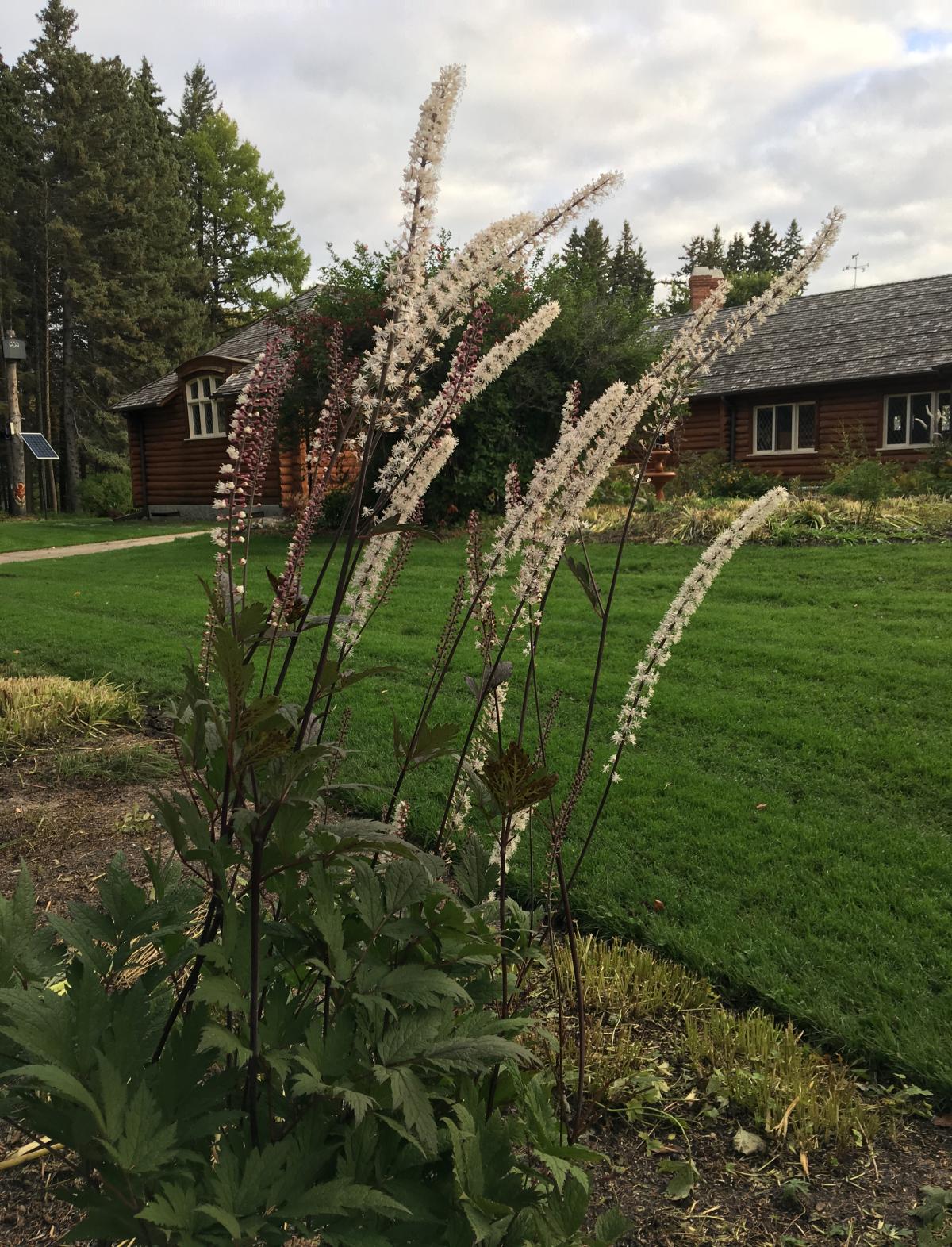
Bugbane aka black cohosh
Actaea sp. syn Cimicifuga sp.
All of the dozen or so species of Cimicifuga have now been reclassified as Actaea. There are a few plants here you should be growing. Bugbanes were so named because it was once believed that they had a strong ability to repel and kill insects, including bedbugs. The Latin name is also where the word “fumigate” is derived from.
Bugbanes are worth growing. These slow growing, long lived perennials are usually late blooming and quite tall. They require a very compost enriched, fertile soil with excellent moisture and drainage. A site sheltered from the wind is preferable, and they want neither full sun nor full shade. They have extremely handsome, lacy foliage and do best in a dappled or a filtered light, or a sunny spot with shade in the hottest parts of the afternoon. They have no pest or disease issues (including deer) and like their relatives, they are considered poisonous.
Be patient when you plant them; they often take three to five years to begin performing well and they are resentful of disturbance so plant them where you want them to stay. The tall wands of bottlebrush-like flowers open in late summer and early autumn are loved by bees and butterflies, and they are also excellent for cutting. The blossoms have a curious fragrance; some people love it and some people don’t but it is definitely interesting.
Cimicifuga racemosa can be found native throughout the eastern half of North America, usually growing in sheltered, partly shady places where both moisture and fertility are not in short supply. It was extensively used for medicine by First Nations people and is also known as black cohosh and snakeroot, in reference to it once being used to treat snakebites. It will grow anywhere from 5-7 ft. tall and depending on the location, usually begins to flower in late August or early September, continuing well into October. It is very showy and will get better every year.
A number of cultivars have been introduced, primarily those with purple or burgundy colored foliage. It is important to note that if you are growing a purple leaf variety, it must get at least half a day of sun for best color otherwise they will revert to green.
‘Brunette’ is an old cultivar that emerges from the ground deep purple in the spring and slowly ages to dark green. It is a vigorous grower and has received the RHS award of merit.
‘Black Negligee’ is a very vigorous grower with gorgeous dark purple foliage and nearly black stems. The flowers are white through pale pink and highly fragrant. It is regarded as being the most scented of all of them. It reaches a height of 4 ft.
‘Hillside Black Beauty’ has purple-black foliage and grows 6 ft. tall. It definitely needs protection from the wind! The flowers are ivory or light pink and appear in great profusion. It is extremely garden worthy and looks especially stunning if grown in mass.
Cimicifuga simplex is an Asian species that usually flowers from September through November. It is not always prairie hardy as a result, and sometimes in October when it is starting to look good it is beaten down by snow or frost. However, some gardeners here have done all right with it. It grows 3-4 ft. tall and has pure white, fluffy flowers on long stems. It’s both showy and beautiful. ‘White Pearl’ is a more compact, more heavily blooming form of it and ‘James Compton’ has purple staining on the foliage primarily in spring.

